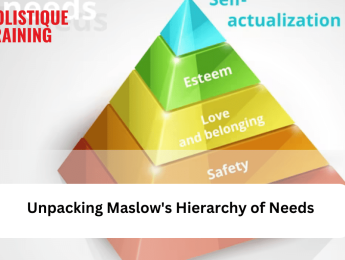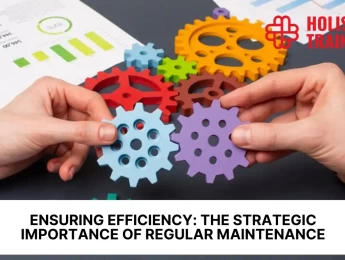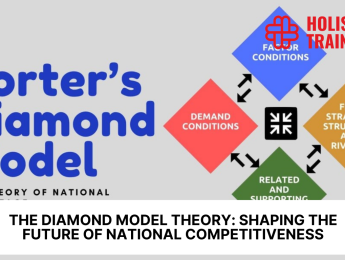- Table of Contents
- Introduction
- Understanding Job Satisfaction
- How Do We Measure Job Satisfaction?
- Surveys
- Interviews and Focus Groups
- Observations
- Feedback and Suggestions Box
- Performance Reviews
- Social Media and Online Platforms
- Are Job Satisfaction and Performance Linked?
- Motivation and Engagement
- Reduced Turnover and Enhanced Retention
- Collaboration and Teamwork
- Employee Well-being and Mental Health
- The Effect of Job Satisfaction on Employees' Performance
- Productivity
- Innovation and Creativity
- Customer Service
- Absenteeism and Presenteeism
- How to Increase Job Satisfaction in the Workplace
- 1- Foster a Positive Work Culture
- 2- Provide Growth and Development Opportunities
- 3- Ensure Fair Compensation and Benefits
- 4- Enhance Communication and Feedback Channels
- 5- Promote Work-Life Balance
- 6- Provide Recognition and Rewards
- 7- Build Strong Leadership and Managerial Support
- 8- Encourage Work Autonomy and Empowerment
- Job Satisfaction Across Generations
- 1- Baby Boomers (Born 1946-1964)
- 2- Generation X (Born 1965-1980)
- 3- Millennials (Born 1981-1996)
- 4- Generation Z (Born 1997-Present)
- Tailoring Strategies for Diverse Generations
- Promoting Intergenerational Collaboration
- Embracing Diversity and Inclusion
- What the Numbers Are Saying
- Conclusion
Introduction
In today's competitive work environment, organisations strive to achieve optimal employee performance. One crucial factor that significantly influences employee performance is job satisfaction. Employees who are satisfied with their work are more likely to be motivated, engaged, and productive. In this blog post, we will explore the concept of job satisfaction, how it is measured, and the undeniable link between job satisfaction and employee performance.
Understanding Job Satisfaction
Job satisfaction refers to an individual's emotional and cognitive evaluation of their job and work experience. It encompasses various aspects, including the nature of the work itself, work-life balance, organisational culture, relationships with colleagues, compensation, and opportunities for growth and development. Job satisfaction is a multidimensional construct influenced by both intrinsic and extrinsic factors.
How Do We Measure Job Satisfaction?
Measuring job satisfaction is a complex task involving assessing subjective feelings and perceptions. Various methods and tools have been developed to measure job satisfaction, providing valuable insights for organisations. Let's explore a few commonly used approaches:
Surveys
Employee satisfaction surveys are invaluable tools in gauging the nuanced aspects of job satisfaction. These surveys delve deep into employees' sentiments, allowing them to articulate their feelings about various aspects of their work environment. Organisations gain quantitative insights through detailed Likert scale questions, enabling them to identify patterns and trends in job satisfaction levels. Businesses can pinpoint specific areas that require attention by analysing the survey data, leading to informed decision-making and targeted interventions.
Interviews and Focus Groups
Qualitative methods like interviews and focus groups provide a qualitative dimension to understanding job satisfaction. Engaging employees in open-ended discussions unveils rich, contextual information that surveys may not capture. These methods encourage employees to express their thoughts, concerns, and suggestions openly. Through in-depth interviews, organisations gain a nuanced understanding of individual experiences, allowing for a more empathetic approach when addressing job satisfaction issues. On the other hand, focus groups facilitate dynamic discussions among employees, uncovering shared concerns and fostering a sense of community within the workforce.
Observations
Sometimes, the most telling signs of job satisfaction manifest through observable behaviours. Observations of employee engagement, commitment, and overall demeanour provide valuable cues about their job satisfaction levels. Managers and HR professionals keen on these behavioural indicators can identify subtle changes in employees' work habits, enthusiasm, or collaboration patterns. Through astute observation, organisations can detect shifts in job satisfaction and proactively address concerns before they escalate, fostering a positive and supportive work environment.
Feedback and Suggestions Box
Implementing a feedback and suggestions box system gives employees an anonymous platform to voice their concerns, suggestions, and feedback. This method allows employees to share their thoughts candidly without fear of reprisal, encouraging honest communication. Regularly reviewing the feedback and suggestions submitted in these boxes provides organisations with valuable insights into the employees' concerns and areas needing improvement. Addressing these concerns demonstrates to employees that their opinions are valued, fostering a sense of trust and improving overall job satisfaction.
Performance Reviews
Incorporating job satisfaction-related metrics into employee performance reviews offers a structured approach to assessing satisfaction levels. During performance discussions, managers can engage employees in conversations about their job satisfaction, allowing them to express their feelings openly. By integrating job satisfaction evaluations into these reviews, organisations understand the employees' contentment levels and can take targeted actions to enhance their job satisfaction.
Social Media and Online Platforms
Monitoring employees' interactions on social media platforms or internal company forums can provide valuable insights into their job satisfaction. Employees often express their opinions, frustrations, or praises online, offering an unfiltered view of their experiences. By actively listening to these online conversations, organisations can gauge the overall sentiment among employees, identify recurring themes, and address concerns promptly. Engaging with employees in these online spaces can also foster a sense of community and belonging, positively impacting job satisfaction.
Are Job Satisfaction and Performance Linked?
Employers commonly ask whether job satisfaction and performance are truly linked. The answer is a resounding yes. Extensive research has consistently shown a positive correlation between job satisfaction and employee performance. Let's delve into some of the reasons behind this connection:
Motivation and Engagement
Job satisfaction serves as a potent catalyst for motivation and engagement. Employees who find contentment in their roles experience a sense of purpose and fulfilment. This emotional connection with their work propels them to go above and beyond their basic job requirements. Motivated employees exhibit a strong work ethic, take ownership of their tasks, and actively seek opportunities to contribute meaningfully to the organisation. Their enthusiasm translates into increased productivity as they willingly invest extra effort and time into their responsibilities, ensuring tasks are completed with diligence and excellence.
Reduced Turnover and Enhanced Retention
Job satisfaction plays a pivotal role in employee retention. Satisfied employees are more likely to stay with an organisation for extended periods. Individuals who are content in their roles are less inclined to seek opportunities elsewhere. This stability in the workforce reduces turnover rates, saving the organisation significant costs associated with recruiting, training, and onboarding new staff. Moreover, long-term employees amass institutional knowledge and experience, becoming valuable assets to the organisation. Retaining experienced staff fosters stability, consistency, and expertise within the workforce, contributing to the organisation's overall performance and success.
Collaboration and Teamwork
Positive job satisfaction creates a conducive environment for collaboration and teamwork. Satisfied employees are not only content in their individual roles but are also more inclined to work harmoniously with their colleagues. Their sense of contentment fosters a cooperative spirit, encouraging the sharing of ideas, knowledge, and expertise. Collaborative endeavours become more productive and creative when team members are satisfied, as they are more receptive to diverse perspectives and open to constructive feedback. Effective teamwork is vital for addressing complex challenges and generating innovative solutions, which are essential for organisational growth and adaptability.
Employee Well-being and Mental Health
Job satisfaction profoundly impacts employee well-being, encompassing both physical and mental health. When employees are content with their work, they experience reduced stress levels. A positive work environment, where employees feel valued and appreciated, mitigates workplace stressors, leading to improved mental health. Lower stress levels contribute to overall well-being, enhancing an individual's resilience in the face of challenges. Furthermore, satisfied employees are less prone to burnout, a prevalent issue in today's high-demand workplaces. Their enhanced mental health translates into improved focus, concentration, and decision-making abilities, all of which are vital components of optimal job performance.
Job satisfaction operates as a performance booster, elevating individual and collective productivity to new heights. Satisfied employees meet the expectations outlined in their job descriptions and exceed them. Their work is characterised by dedication, creativity, and a proactive approach. Job satisfaction amplifies the intrinsic motivation within employees, transforming routine tasks into opportunities for personal and professional growth. Organisations that recognise and nurture this symbiotic relationship between job satisfaction and performance are better positioned to create vibrant, productive, and harmonious workplaces, ensuring the mutual flourishing of the employees and the organisation.
The Effect of Job Satisfaction on Employees' Performance
Now that we understand the correlation between job satisfaction and employee performance, let's explore how job satisfaction influences various aspects of an employee's performance:
Productivity
Satisfied employees are inherently more productive. When individuals find fulfilment and happiness in their roles, they are naturally driven to perform at their best. This positive emotional state translates into focused and committed efforts. Satisfied employees are eager to complete tasks efficiently and effectively, often going the extra mile to ensure high-quality results. They are punctual, diligent, and proactive, using their time and energy wisely. In this state of contentment, employees are more likely to meet deadlines and exceed expectations, contributing significantly to the organisation's overall productivity.
Innovation and Creativity
Job satisfaction acts as a catalyst for innovation and creativity within the workplace. Employees who are happy and content are more inclined to think outside the box, explore new ideas, and experiment with different approaches. Satisfied employees feel a sense of security in their positions, allowing them to take calculated risks without fear of retribution. This freedom to innovate leads to developing novel solutions, creative products, and streamlined processes. Job satisfaction nurtures an environment where employees are encouraged to share their inventive ideas, fostering a culture of continuous improvement and a competitive edge for the organisation.
Customer Service
Employees' job satisfaction directly influences how they interact with customers. Satisfied employees are more likely to provide exceptional customer service experiences. Their positive attitude and enthusiasm are contagious, creating a pleasant customer atmosphere. Satisfied employees take pride in their work, leading them to care about customer satisfaction genuinely. They are patient, attentive, and empathetic, understanding the customers' needs and going above and beyond to meet them. Exceptional customer service strengthens customer loyalty, enhances the organisation's reputation, and contributes to increased revenue, making it a vital outcome of employees' job satisfaction.
Absenteeism and Presenteeism
Job satisfaction significantly affects absenteeism and presenteeism rates within an organisation. Satisfied employees have a strong sense of commitment to their work, making them more likely to attend work consistently. They have lower absenteeism rates as they are genuinely motivated to contribute to their workplace. Additionally, job satisfaction reduces the occurrence of presenteeism, where employees physically show up to work but are not fully engaged or productive. Satisfied employees are physically and mentally present, ensuring their focus and dedication to their tasks. This high engagement and attendance leads to increased productivity and efficiency in the workplace.
In summary, job satisfaction is not merely a feel-good factor within the workplace but a powerful determinant of employees' performance and organisational success. Organisations prioritising job satisfaction invest in the emotional well-being of their employees, leading to increased productivity, innovation, exceptional customer service, reduced absenteeism, and improved overall employee health. Recognising the multifaceted impact of job satisfaction empowers organisations to create supportive, engaging, and fulfilling workplaces where employees are motivated to perform at their best, leading to long-term success and sustainability.
How to Increase Job Satisfaction in the Workplace
Creating a work environment where employees feel valued, motivated, and content is crucial for enhancing job satisfaction. By implementing strategic initiatives, organisations can foster a positive atmosphere, boost morale, and improve overall job satisfaction among their workforce. Here are several effective strategies to achieve this goal:
1- Foster a Positive Work Culture
A positive work culture is the cornerstone of job satisfaction. Cultivate an environment where open communication, respect, and teamwork are encouraged and celebrated. Encouraging collaboration and providing platforms for employees to voice their opinions and ideas fosters a sense of belonging. Recognising and celebrating achievements, both big and small, create a supportive atmosphere where employees feel appreciated and valued.
2- Provide Growth and Development Opportunities
Invest in employee development by offering training programmes, workshops, and mentorship opportunities. According to research conducted by Bonusly, a striking 91% of highly engaged employees express genuine satisfaction with the professional development opportunities available to them. Support career progression through promotions, job rotations, and challenging assignments. Employees who see a clear path for growth and development are more likely to be satisfied and motivated.
3- Ensure Fair Compensation and Benefits
Fair and competitive compensation packages are essential for job satisfaction. Salaries and benefits should align with industry standards and reflect employees' skills and contributions. Additionally, offering benefits such as flexible schedules, remote work options, wellness programs, and adequate vacation time promotes a healthy work-life balance. Employees who feel fairly compensated and supported in their personal lives are more likely to experience job satisfaction.
4- Enhance Communication and Feedback Channels
Establish effective communication channels that encourage open dialogue between employees and management. Regularly solicit feedback through surveys, suggestion boxes, or anonymous platforms. Actively listen to employee concerns and address them promptly. Transparent and responsive communication builds trust and strengthens employee and organisation bonds. Encouraging feedback not only identifies areas of improvement but also makes employees feel heard and valued.
5- Promote Work-Life Balance
Recognise the importance of work-life balance and create policies that support it. Encourage employees to take breaks, utilise vacation time, and maintain boundaries between work and personal life. Flexible work arrangements, such as remote work options or flexible hours, significantly contribute to job satisfaction by enabling employees to effectively manage their professional and personal commitments. Promoting a healthy work-life balance reduces stress and burnout, enhancing overall job satisfaction.
6- Provide Recognition and Rewards
Implement a robust recognition and rewards programme acknowledging employees' contributions and achievements. Celebrate milestones, outstanding performance, and innovative ideas. Publicly recognise individuals or teams for their hard work and dedication. Regular recognition boosts morale and fosters a sense of appreciation and satisfaction. Personalised recognition, tailored to individual preferences, goes a long way in making employees feel valued and motivated. Studies also indicate robust employee recognition initiatives correlate with increased employee retention and reduced organisational turnover rates.
7- Build Strong Leadership and Managerial Support
Invest in leadership development programmes to ensure managers have the necessary skills to support and engage their teams effectively. Provide managers with tools and resources to promote employee well-being and job satisfaction. This is where we come in. We provide comprehensive leadership courses that help your managers stay up-to-date on the latest trends and skill sets they need to acquire to excel in their field. Get in touch with us now to learn more about our courses.
8- Encourage Work Autonomy and Empowerment
Grant employees a degree of autonomy and decision-making power in their roles. Empower them to take ownership of their work and provide opportunities for them to contribute to decision-making processes. Employees who feel trusted and empowered tend to have higher job satisfaction and a sense of fulfilment. Autonomy boosts confidence and encourages employees to be proactive and innovative in their roles, leading to increased job satisfaction.
In short, increasing job satisfaction in the workplace requires a holistic approach that addresses various aspects of employees' professional and personal lives. By fostering a positive work culture, providing opportunities for growth, ensuring fair compensation, promoting work-life balance, and empowering employees, organisations can create an environment where employees thrive, leading to enhanced job satisfaction, productivity, and overall success.
Challenges | Impact | Solutions |
Lack of Recognition | Decreased Morale | Implement Recognition Programmes |
Poor Work-Life Balance | Increased Stress | Promote Flexible Work Arrangements |
Limited Growth Opportunities | Decreased Motivation | Offer Skill Development Programmes |
Inadequate Compensation | Low Retention Rates | Ensure Competitive Salary Packages |
Lack of Communication | Misunderstandings | Establish Open Feedback Channels |
Table 1: Challenges of employee job satisfaction & their solutions
Job Satisfaction Across Generations
The modern workforce is characterised by unprecedented generational diversity, with Baby Boomers, Generation X, Millennials, and Generation Z all working together within the same organisations. Each generation brings unique values, expectations, and perspectives to the workplace. Understanding these generational differences is crucial for creating a harmonious and inclusive work environment. Let's delve into the distinct job satisfaction dynamics among these generations:
1- Baby Boomers (Born 1946-1964)
Baby Boomers, often characterised by their strong work ethic and dedication, place significant value on job stability and loyalty. They tend to find satisfaction in long-term employment with career growth and recognition opportunities. Providing mentorship programs and acknowledging their wealth of experience are key strategies to enhance job satisfaction among Baby Boomers. Recognising their achievements and creating pathways for them to share their knowledge with younger employees fosters a sense of pride and job satisfaction in this generation.
2- Generation X (Born 1965-1980)
Generation X employees prioritise a balance between work and personal life. They value flexibility, autonomy, and opportunities for skill development. To enhance job satisfaction for Generation X, organisations can offer flexible work schedules, remote work options, and continuous learning opportunities. Providing opportunities for professional development and encouraging a healthy work-life balance resonates positively with Generation X, boosting their job satisfaction significantly.
3- Millennials (Born 1981-1996)
Millennials seek meaningful work, career advancement, and a positive work culture. They appreciate opportunities for innovation, creativity, and social impact. Millennials are motivated by a sense of purpose; thus, fostering a collaborative, inclusive, and socially responsible work environment is essential. Encouraging collaboration, recognising their contributions, and providing avenues for career progression and skill development are key factors in enhancing job satisfaction among Millennials. Moreover, involving them in decision-making processes and valuing their input creates a sense of ownership and job satisfaction.
4- Generation Z (Born 1997-Present)
Generation Z, the newest entrants into the workforce, values diversity, inclusion, and technological advancements. They seek workplaces that embrace innovation, provide learning opportunities, and promote social responsibility. Organisations can enhance job satisfaction among Generation Z by creating diverse and inclusive environments where their voices are heard and respected. Offering continuous learning programs, incorporating advanced technologies into work processes, and involving them in initiatives related to social causes align with their values, contributing to their job satisfaction.
Tailoring Strategies for Diverse Generations
Understanding these generational differences is only the first step. Tailoring workplace strategies to cater to each generation's unique needs and preferences is paramount. Implementing flexible work policies that accommodate various lifestyles, providing personalised training and development programs, and promoting intergenerational mentorship opportunities create a holistic work environment where employees from different generations can thrive together.
Promoting Intergenerational Collaboration
Encouraging collaboration and knowledge exchange among different generations fosters mutual understanding and respect. Creating cross-generational teams where employees can share their expertise and learn from each other enhances job satisfaction and contributes to a rich, collaborative work culture. Intergenerational mentorship programs, where older employees mentor younger ones, and reverse mentorship programs, where younger employees share their expertise with older colleagues, bridge generational gaps and promote a sense of unity and job satisfaction among all employees.
Embracing Diversity and Inclusion
Embracing diversity and inclusion is at the heart of fostering job satisfaction among employees from different generations. Celebrating the diverse perspectives, skills, and experiences each generation brings creates a vibrant and inclusive workplace. Organisations prioritising diversity and inclusion initiatives create an environment where all employees feel valued and appreciated, leading to enhanced job satisfaction and a sense of belonging among employees of every generation.
What the Numbers Are Saying
Findings from Westfield Health's study, as mentioned in an article by HR News, unveil intriguing insights into job satisfaction across generations. Among employees aged 18-24, a substantial 73% reported satisfaction in their current roles. However, the remarkable aspect is that more than half of them (55%) actively consider job changes, pointing towards a significant willingness for career exploration and change within this younger demographic.
In contrast, workers aged 55-64 exhibited a lower satisfaction rate at 54%. However, only a minority, specifically 30%, wanted to seek new opportunities. This discrepancy between job satisfaction and the inclination to change jobs highlights a generational gap. While younger employees might be content with their current roles, they are more open to exploring new avenues. On the other hand, older employees, despite being less satisfied, are comparatively more rooted in their positions, possibly due to factors such as job stability, experience, or proximity to retirement. This nuanced difference underscores the complexity of job satisfaction within the context of different age groups.
Conclusion
In today's diverse and dynamic workforce, understanding the intricate relationship between job satisfaction and employee performance is paramount for organisational success. Job satisfaction is the cornerstone of a positive work environment, fueling motivation, engagement, and productivity among employees of all generations. By recognising the diverse factors that influence job satisfaction, from fostering a positive work culture and providing growth opportunities to embracing generational differences and promoting work-life balance, organisations can create an environment where employees thrive.
Investing in job satisfaction nurtures the well-being of individual employees and contributes significantly to the long-term success of the organisation as a whole. Satisfied employees are more than just productive workers; they are enthusiastic innovators, empathetic customer service providers, and resilient team players. Their positive energy reverberates throughout the organisation, creating a culture of collaboration, creativity, and continuous improvement.
At Holistique Training, we understand the vital importance of employee satisfaction in driving organisational excellence. Our comprehensive course, 'Job Analysis and Evaluation,' is meticulously designed to empower organisations with the knowledge and skills needed to analyse job roles effectively and ensure alignment with employee skills and aspirations. By enrolling in our course, you unlock the secrets to enhancing job satisfaction, maximising employee potential, and propelling your organisation towards unparalleled success.
Join us on a transformative journey where you learn not just to understand job satisfaction but to master it, shaping a workplace where every employee finds fulfilment, purpose, and unmatched job satisfaction. Let’s embark on this path together, transforming how you work and your entire organisation thrives.
























